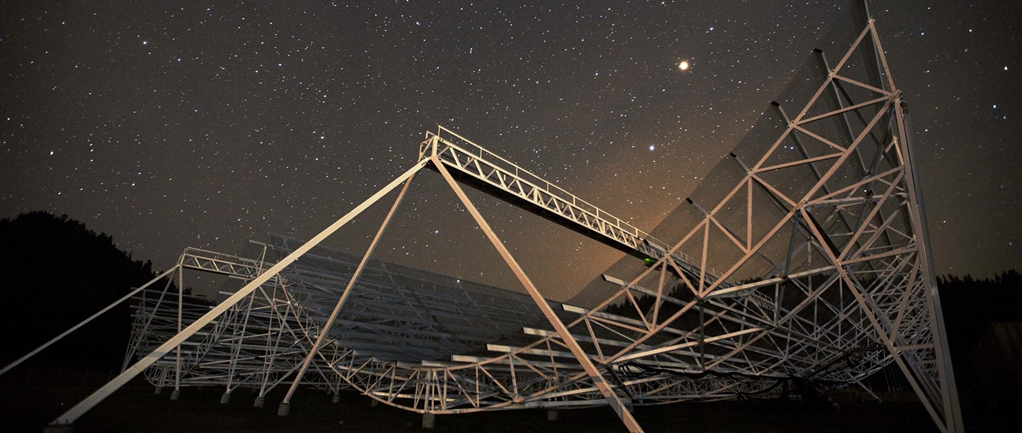For the first time ever, the Canadian Hydrogen Intensity Mapping Experiment (CHIME) telescope detected a repeating fast radio burst (FRB) that follows a regular 16-day cycle. The Feb. 13 discovery comes a month after the CHIME telescope detected the second ever FRB from deep space. It adds a new clue to the mystery of FRBs, indicating that they could orbit celestial bodies or emit from objects that have some sort of cyclical routine.
First observed in 2007, FRBs are very intense, short bursts of radio waves produced from unidentified bodies in outer space. These detections represent new and unknown astrophysical phenomena and can provide answers to previously detected radio waves, whose sources were once a complete mystery.
A group of over 50 scientists from universities across Canada first used CHIME in 2017. One such scientist was Victoria Kaspi, a professor in the Department of Physics at McGill. Kaspi explained how the telescope works and how it manages to translate signals obtained from billions of light years away.
“CHIME is made of cylindrical reflectors that reflect the radio waves coming from the overhead sky into 1,024 antennas that are suspended above the reflector surfaces,” Kaspi wrote in an email to The McGill Tribune. “These antennas are then read out into sophisticated electronics […] and then a custom-built supercomputer.”
Kaspi noted how the supercomputer spewed out data that she and her team would then have to search through in real time to detect the presence of FRBs. Using sophisticated software, including artificial intelligence (AI) algorithms, researchers were successfully able to reveal an FRB.
FRBs, when detected, only last a few milliseconds. Though not completely understood, Kaspi explained that scientists are increasingly discovering FRBs, suggesting they are very common in the universe.
“FRBs can be used as novel radio probes of the structure of the universe,” Kaspi wrote.
Using telescopes like CHIME, scientists are discovering that FRBs come from ‘special’ regions of the universe, representing very powerful explosions like supernovas or even black holes.
Another key concept observed in this experiment was the scattering of detected FRBs. Scattering, as the name suggests, is when waves or particles hit a new medium and disperse in different directions. This physical phenomenon is most commonly seen in light when it hits a surface. The scattering of FRBs led Kaspi’s team to conclude that the bursts represent large astrophysical bodies in places far outside our galaxy. The pattern of scattering indicates what material the FRBs have passed through on their journey to Earth.
“We found that the shapes of the first few bursts indicate that the radio waves in many cases were mildly scattered by plasma, and that this plasma must be different from the plasma we typically find between galaxies,” Kaspi wrote. “[FRBs] provide brief ‘snapshots’ through the plasma in the intergalactic medium as well as in the haloes of intervening galaxies.”
Since the discovery of the second FRB, hundreds more have been detected and are now being analyzed to understand why they occur and the physics behind the astrophysical explosions that they represent.
Kaspi explained that researchers are also attempting to make sense of the environment from where FRBs originate, which, when better understood, could provide new ideas for what is going on in the depths of outer space.








